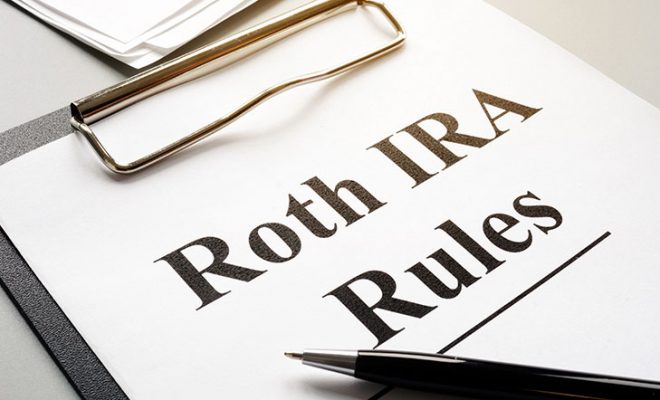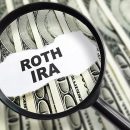Retirement Planning – End-of-Year Checklist for Retirees

As the year draws to a close, it’s an ideal time for retirees to look closer at their financial plans. Year-end reviews can help keep track of finances, make adjustments as required, and maintain a robust retirement strategy. Doing this is especially important because evolving life circumstances can push your retirement goals into the backseat. Having a proactive approach provides an opportunity to refine your plans and address any gaps before they become larger issues.
Due to the plethora of advice available, assessing what steps should be taken in retirement planning and where to begin may become difficult. A comprehensive end-of-year checklist for retirees may help make this process more manageable. This checklist can help you assess your financial health, evaluate your income streams, and make informed decisions about the future. A financial advisor can guide you through your retirement planning journey and help you enter the new year well-prepared and financially secure.
This article discusses a comprehensive checklist for retirees that they should be mindful of when they’re about to retire.
Below is an exhaustive end-of-year retirement checklist for retirees:
1. Review and adjust retirement goals
As life progresses, financial situations and aspirations evolve. Staying stuck to a single financial plan without accounting for these changes may leave you with insufficient corpus in retirement. It is advised to regularly review and adjust goals to reflect your current financial situation and plans. As the year draws to a close, it is an ideal time to make these assessments and any necessary adjustments. Here’s how you can go about it:
a. Assess current financial status
Start by taking a comprehensive look at your financial health. Evaluate your savings, investments, and income sources to determine whether you are on track with your retirement plan checklist. Compare your current assets against your anticipated expenses to ensure your financial resources are sufficient to sustain your desired lifestyle. Consider factors like inflation, market performance, and unexpected expenses that may have impacted your finances over the past year. This step can help identify areas where you might need to make changes, whether it’s boosting savings, rebalancing investments, or revising withdrawal strategies.
b. Revisit retirement lifestyle objectives
Retirement is a dynamic phase of life, and your goals may evolve. Perhaps you’ve decided to travel more, support a grandchild’s education, or pursue a new hobby. Aligning your financial plans with these changing priorities ensures you can enjoy the retirement you envision. Reflect on whether your current spending patterns and income streams align with your desired lifestyle. If necessary, adjust your budget or financial strategies to accommodate these new objectives. Making these alignments proactively helps prevent financial strain and keeps your retirement goals both realistic and fulfilling.
2. Evaluate available income streams
Ensuring a steady and sustainable income is among the primary goals of retirement planning. At the end of the year, assess all income sources to confirm they align with your financial needs and goals. This review helps identify any discrepancies or opportunities for optimization. Here are some common sources of income you can look at:
a. Social Security benefits
Your Social Security benefits are likely a key component of your retirement income. Take the time to review the status and accuracy of your payments. Log in to your Social Security account or consult recent benefit statements to confirm you’re receiving the correct amount. If you notice any discrepancies or have questions about cost-of-living adjustments, contact the Social Security Administration promptly to resolve them. Staying informed about your benefits ensures you’re maximizing this critical income source.
b. Pension plans
For retirees receiving pension income, it is crucial to review pension statements regularly. Verify that the disbursements you’re receiving match your expectations and the terms outlined in your plan. If your pension offers options for adjustments, such as survivor benefits or lump-sum payouts, consider whether these choices align with your current financial goals. If you’re unsure about any details, consult your pension provider for clarification or guidance.
c. Investment withdrawals
If you rely on investment accounts to supplement your retirement income, evaluate the sustainability of your current withdrawal rates. Conventional wisdom suggests withdrawing no more than 4% annually, but individual circumstances, such as market performance or increased expenses, may warrant adjustments. Analyze whether your withdrawals are depleting your portfolio faster than anticipated. If necessary, consult a financial advisor to explore strategies for balancing income needs with long-term portfolio growth and stability.
3. Withdraw your Required Minimum Distributions (RMDs) on time
RMDs are mandatory withdrawals that retirees must take annually from certain retirement accounts, such as traditional IRAs, 401(k)s, and other tax-deferred plans, once they reach a specific age. RMDs must be taken by April 1 after you turn 73 years old. The purpose of RMDs is to ensure that the government eventually collects taxes on pre-tax contributions and earnings. Failing to take RMDs as required can result in significant penalties of up to 25% of the amount not withdrawn. The penalty drops to 10% if the RMD is timely corrected within two years. This makes it vital to understand and comply with these rules. Here’s what you should be mindful of:
a. Be mindful of year-end deadlines
For most retirees, RMDs must be taken by December 31 each year to avoid penalties. However, if it’s your first year taking an RMD, you have the option to delay your first distribution until April 1 of the following year. Be cautious with this choice, as delaying means you’ll need to take two distributions in one year, potentially pushing you into a higher tax bracket. To stay on top of deadlines, consult your financial advisor and ensure the correct amount is withdrawn before the year ends.
b. Consider taking strategic withdrawals
While RMDs are mandatory, how you handle them can impact your overall tax strategy. Consider withdrawing funds in a tax-efficient manner to minimize your taxable income. For example, if you don’t require the full RMD amount, you may use the distribution to fund charitable donations through a Qualified Charitable Distribution (QCD). Doing so allows you to donate directly from your retirement account without incurring taxes. Working with a financial advisor or tax professional can help you develop a strategy that aligns with your financial goals.
4. Pay attention to tax planning
Tax planning is a critical aspect of maintaining financial stability in retirement. Review your tax situation before the end of the year to identify opportunities to minimize your tax liability and make the most of available strategies.
a. Review which tax bracket you fall into
Understanding where you fall in the current tax brackets sets the stage for effective year-end tax planning. Review your taxable income to assess whether you’re nearing the threshold for a higher bracket. If you are, consider strategies to lower your taxable income, such as making contributions to a Health Savings Account (HSA) or deferring additional income to the following year. This analysis helps you optimize your tax liability and keep your money working for you.
b. Consider making charitable contributions
Making charitable contributions before the end of the year is a smart way to support causes you care about while reducing your taxable income. If you itemize deductions, you can deduct contributions made to qualified charities, potentially lowering your overall tax bill. Retirees with RMD obligations can also use a Qualified Charitable Distribution (QCD), which allows them to donate up to $100,000 directly from their IRA to a charity. This strategy not only fulfills your RMD requirement but also avoids increasing your taxable income.
c. Employ tax-loss harvesting
Tax-loss harvesting is a strategy that involves selling investments at a loss to offset gains realized earlier in the year. This approach can reduce your taxable income and help rebalance your portfolio. For instance, if you sold stocks or mutual funds that performed well, selling underperforming assets can help offset the capital gains tax. Be mindful of the IRS’s wash-sale rule, which prohibits buying a substantially identical investment within 30 days before or after the sale. Properly implementing tax-loss harvesting can save money and improve your portfolio’s overall tax efficiency.
5. Focus on healthcare and insurance
Healthcare costs are among the most significant expenses retirees face, making it crucial to review your healthcare and insurance coverage regularly. Here are a few important steps to consider as a part of your year-end checklist:
a. Review your Medicare
Healthcare is a major expense in retirement, making it vital to review your Medicare plans during the annual open enrollment period. Ensure that your coverage aligns with your medical needs and budget. This is particularly important if you’ve experienced changes in your health or if your current plan’s costs and benefits have been adjusted. Compare Medicare Advantage and Part D prescription drug plans to confirm you’re receiving the best value and adequate coverage for your situation.
b. Consider long-term care insurance
As you age, the likelihood of requiring long-term care services increases. Evaluate your current long-term care insurance policy to ensure it meets your needs. If you don’t have coverage, consider your options now, as premiums can rise significantly with age or changing health conditions. Long-term care planning can help protect your assets and provide peace of mind for you and your family.
c. Enroll in a Health Savings Account
If you’re enrolled in a high-deductible health plan (HDHP), contributing to a Health Savings Account can be an excellent way to prepare for future medical expenses. HSAs offer tax advantages, including tax-free contributions, growth, and withdrawals for qualified medical expenses. Although contributions to an HSA aren’t allowed after enrolling in Medicare, retirees with existing accounts can still use the tax-free funds for eligible healthcare costs, making HSAs a valuable resource in managing healthcare expenses during retirement.
SPONSORED WISERADVISOR
6. Review and update your estate plan
Your estate plan is a living document that should evolve alongside your life circumstances. Below are some steps to take in this regard:
a. Update wills and trusts
Review your will and established trusts to ensure they reflect your current wishes and financial situation. Changes such as the addition of grandchildren, the loss of a loved one, or significant shifts in your asset structure might necessitate updates to your estate planning documents.
b. Check and update beneficiary designations
Ensure the beneficiary information on all accounts such as retirement plans, life insurance policies, and investment accounts is accurate and up to date. Mistakes or outdated designations can cause delays and complications in the distribution of assets. Regularly verifying this information prevents unwanted outcomes and ensures your assets are passed on as intended.
c. Define or check the power of attorney and healthcare directives
Confirm that the individuals designated in your power of attorney and healthcare directives are still appropriate choices. These documents grant an individual the authority to make financial or medical decisions on your behalf, so they must reflect your trust and preferences. If circumstances have changed, update these designations promptly to avoid potential disputes or delays in decision-making.
7. Review your budget and spending
The end of the year is also a good time to review your budget and spending. Doing so can help maintain financial stability in retirement. The following steps may help ensure that your financial plan remains on track and supports your long-term goals.
a. Analyze annual spending
Year-end is an ideal time to compare your actual spending against your planned budget. Look for discrepancies to identify areas where you may have overspent or underspent. This review helps you refine your budgeting process and understand where your money is going, empowering you to make informed financial decisions.
b. Adjust for inflation
Inflation can erode purchasing power over time, making it essential to account for rising costs in your budget. Review categories like healthcare, groceries, and utilities, which are often most affected by inflation, and adjust your budget accordingly. Ensuring your retirement income keeps pace with inflation will help you maintain financial stability.
c. Plan for large expenses
Anticipate any significant expenses in the upcoming year, such as home renovations, medical procedures, or family events, and set aside funds to cover them. Proactively allocating resources for these costs can prevent financial strain and reduce the need to draw excessively from retirement accounts, helping preserve your long-term financial security.
8. Evaluate your investment portfolio
Year-end is an opportune time to review your investment portfolio to ensure it aligns with your financial goals and risk tolerance. Rebalancing, evaluating performance, and preparing for market volatility can help optimize your investments and maintain financial stability throughout retirement.
a. Rebalance portfolio
Over the course of a year, market fluctuations can shift the balance of your portfolio, potentially exposing you to more risk than intended. Review your asset allocation to ensure it aligns with your desired risk levels and retirement timeline. Rebalancing—by selling overperforming assets and buying underperforming ones—helps maintain your portfolio’s original strategy and prevents overexposure to volatile markets.
b. Assess investment performance
Evaluate the performance of your investments to determine whether they are meeting expectations. Compare individual holdings against benchmarks for similar assets and assess whether any underperforming investments need to be replaced. Use this review to ensure your portfolio is working efficiently to support your retirement goals.
c. Consider future market conditions
Retirees often face heightened sensitivity to market volatility due to reliance on fixed incomes. Take the time to prepare for potential market shifts by diversifying investments and maintaining a cash reserve for short-term needs. Consult a financial advisor to explore strategies for protecting your portfolio, such as adjusting withdrawal rates or incorporating lower-risk assets.
9. Manage your debts
Debts can quickly derail you from your retirement plans. Year-end is, thus, a great time to pay attention to debt management:
a. Review outstanding debts
Assess any remaining debts, such as mortgages, car loans, or credit card balances. Develop a plan to pay down high-interest debts first, as these can quickly erode retirement savings.
b. Consider refinancing
If you have a mortgage or other significant loans, explore refinancing options to secure better interest rates. Lower rates can reduce monthly payments, freeing up cash for other expenses or investments. Ensure the refinancing process aligns with your long-term financial strategy and doesn’t extend debt repayment unnecessarily.
c. Avoid new debt
Living within your means is essential to maintaining financial stability in retirement. Avoid taking on new debt unless necessary, and focus on using existing income and savings to cover expenses.
10. Consult with a financial advisor
End-of-year is an ideal time to consult with your financial advisor to review and adjust your retirement strategy. These experts can help you refine your investment portfolio, optimize your tax planning, and ensure your estate documents are up to date. Regular consultations provide valuable insights and ensure your plan adapts to changes in your circumstances or financial landscape.
To conclude
Retirement planning is an ongoing process where being proactive can prevent future challenges. The end of the year is a great time to refine your strategy, adapt to changing circumstances, and secure your financial stability. With thoughtful planning and regular reviews, you can enjoy peace of mind and focus on making the most of your retirement years.
The aforementioned year-end retirement plan checklist is a great starting point. You may consider hiring a financial professional to ensure your plan is comprehensive and tailored to your unique needs. An experienced advisor can provide personalized guidance, help you navigate complex financial decisions, and align your retirement strategy with your retirement goals.
Use the free advisor match tool to get matched with seasoned financial advisors who can help plan for the later years of your life and ensure you’re ready for retirement. Answer a few simple questions based on your financial needs and get matched with 2 to 3 financial advisors who may be best suited to help you.











